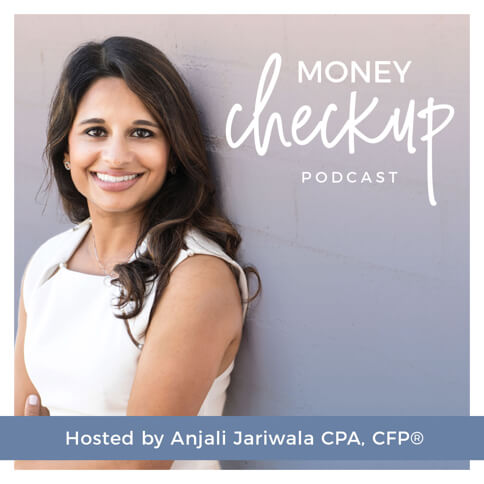In popular culture, the stock market is a loud and aggressive place where suit-wearing traders make one frantic phone call after another. Or we picture hedge fund analysts in front of four computer screens each, running complex programs in search of the perfect investment formula that will generate double-digit returns for investors.
In reality, for most of us, investing doesn’t look anything like that. It isn’t (and shouldn’t be) stressful or fast-paced.
If you’re already saving for retirement and other financial goals, like kids’ education, your financial advisor might suggest investing some of your taxable savings in financial markets. Here’s what that means.
What does “the market” mean when it comes to investing?
When many of us imagine “the market,” we picture a specific stock market index such as the S&P 500 or the Dow Jones Industrial Average. In reality, those numbers only represent a tiny subset of publicly traded companies around the world.
The Russel 3,000 Index is designed to track the entire U.S. stock market. And the MSCI World Index includes securities from more than 1,600 companies across 23 world markets, from Australia to Singapore to the Netherlands.
Most portfolios are invested in a variety of market indexes, not just in the S&P 500 or the Dow Jones.
What’s the difference between a stock and a bond?
Companies and institutions sell stocks and bonds to raise capital and finance projects.
When a company sells stocks, they offer ownership shares to the public. Owning stock means investors have a claim on the assets or earnings of the company, in accordance with how many shares they own. When a company makes a profit, it may pay a shareholder dividend.
When a company sells bonds, it’s almost as if the bondholders are pooling their money to give the company a loan. A bond is a contractual statement that promises repayment of the investment with interest.
Bonds are generally considered less risky than stocks because, if a company declares bankruptcy, bondholders are considered creditors and can recoup some or all of their investment. Stockholders, on the other hand, have no guarantee of repayment in case of bankruptcy.
Most portfolios include both stocks and bonds. The proportion of stocks to bonds varies based on each investor’s risk tolerance and time horizon for needing the money. Generally, younger investors seek to hold more stocks because they have more time before they need the funds for retirement. Investors who are closer to retirement tend to prioritize bonds to preserve their capital.
What’s the difference between a mutual fund and an ETF?
Both ETFs and mutual funds pool money from a number of investors. They then invest that money across hundreds of different securities.
A mutual fund is an investment vehicle overseen by a fund manager, who directs the fund’s investments. They allow the ability for active management — the fund manager makes decisions about how to allocate assets in the fund — and, thus, usually, have higher expense ratios than ETFs. Mutual funds may come with a higher minimum investment.
An ETF, or exchange-traded fund, is another way to invest money across a variety of companies. ETFs tend to be passively managed, based on a market index, and usually, don’t have a minimum investment requirement.
Also, ETFs are traded on stock exchanges as if they were securities themselves. Anyone can buy or sell their interest in a given ETF at any time. Mutual funds, on the other hand, can only be purchased at the end of each trading day based on a calculated price.
Since mutual funds may be actively traded, they may result in more tax implications than a passively managed ETF. This is because each time a company is sold within the investment, it may trigger tax gains or losses.
Mutual funds tend to pay out their tax implications toward the end of the year. For that reason, timing may be a factor to consider when investing in mutual funds. If you hold the mutual fund on a certain date, you will incur the tax implications for the entire year, even if you held it for a short amount of time. ETFs, on the other hand, trade like stocks, so the tax implications are usually dividends which may be taxed at the lower capital gains rate.
What are expense ratios?
The expense ratio is the cost charged to investors simply for owning an interest in an ETF or a mutual fund. Expense ratios are publicly advertised (on the prospectus) and consistent for all investors who purchase the ETF or mutual fund. They are usually expressed as a percentage — for example, an actively managed mutual fund might charge 0.5% or 0.75% in annual fees while a passive investment may charge less than 0.1%.
What’s the difference between active and passive management?
“Active management” describes the process of someone actively managing a portfolio in hopes of outperforming the market. These investments employ their own analysts and researchers to try to figure out which stocks or bonds are under- or overvalued. Fund managers buy the investments that their research says are likely to generate high returns.
The trouble is, active management assumes that the market is not efficient at setting security prices. A majority of actively managed investments generally underperform the average market portfolio return on a long-term horizon. This happens both because markets tend to be very efficient at processing information and because active managers charge higher expense ratios.
Further, if a fund fails, it closes, and that’s that — investors have little to no recourse.
ETFs and index funds — which invest in a fixed basket of companies, such as the whole S&P 500 — are passive investments. The investment will hold the same securities as the underlying investment and is rebalanced one time each year.
Passive investments generally have very low expense ratios since there is very little trading within the portfolio. However, there are some high implementation costs behind the scenes. Index fund and ETF transactions are limited to specific securities at specific times, which can drive the cost of trading those securities up.
Investors generally don’t see implementation costs, however. And passively managed investments are very likely to match the market as a whole, giving investors a sense of long-term security.
What is diversification?
A diversified portfolio is one that invests across different countries, markets and asset classes. Spreading out your investments mitigates volatility as returns smooth out over time. It also frees investors from having to try to “pick winners,” in terms of identifying investments that will generate high returns. When you have a diversified portfolio, your returns will fall within the returns of the market. You won’t be the highest-performing, but you also won’t be the lowest-performing. The middle of expected returns is a great place to have your money for long-term goals like retirement.
What is asset allocation?
Asset allocation describes how much of a given portfolio is invested in stocks compared to bonds. Generally, investors work with their financial advisors to determine an ideal asset allocation, based on their current life situation and ability to tolerate risk. There are also many platforms available that will set up the allocation based on your risk tolerance and age.
There is no one-size-fits-all asset allocation rule. But generally, younger investors allocate more of their money toward stocks compared to bonds. Older investors are usually seeking more conservative investments and are more sensitive to tax penalties, so they may prioritize bonds, especially municipal bonds that include tax benefits. This is because as you approach retirement, asset preservation becomes the main focus, rather than investment returns.
What is rebalancing?
Rebalancing is the ongoing work of maintaining your desired asset allocation. If one part of your portfolio grows in value faster than another, you can sell some of the assets that have gained value and reinvest those gains in the assets that have lost value.
For example, picture an investor who wants 60% of her portfolio invested in stocks and 40% invested in bonds. The stock market performs well and those assets quickly grow in value, but the bond market remains steady. At the end of the year, because stocks have overperformed, her portfolio is now 65% stocks and 35% bonds. To rebalance her portfolio, this investor would sell 5% of her stock assets and reinvest those gains in the bond market. This systematic approach forces you to buy low and sell high and it takes the emotion out of investing.
When this investor rebalances her investments, the total value of her portfolio remains the same, but she’s no longer taking on more risk than she planned.
Think of rebalancing as maintenance on your investment portfolio. Your financial advisor can help you rebalance your investments several times per year depending on your needs.
Why should I invest?
Holding cash might feel more comfortable than investing it in across hundreds of securities. There is risk in investing your money, of course, but there is also risk in not investing your money due to inflation.
The value of a dollar today will not be the same as a dollar 10, 15 or 20 years from now. You want your money to at least keep up with inflation and work for you with investment returns. When savings accounts pay a meaningful interest rate, the value of your cash may keep pace with inflation, but will seldom outpace it. Even when ETFs and index funds under-perform, they still have a long track record of generating returns over time that are greater than inflation.




